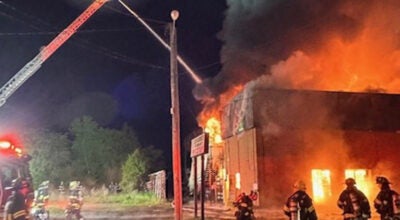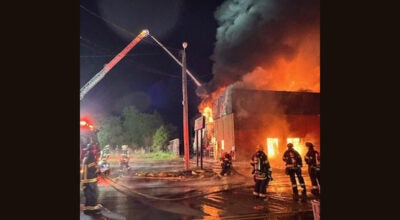Flu report raises concern
Published 10:28 pm Tuesday, August 25, 2009
A new report on the H1N1 virus from a presidential advisory group is causing widespread concern in the country, but possible death tolls listed in the report are only a plausible scenario — not a prediction.
The new report from the President’s Council of Advisors on Science and Technology envisions that between 30,000 and 90,000 deaths from the H1N1 virus could occur in the fall, mainly among children and young adults. Infection could occur in up to half of the population during the fall and winter, with symptoms occurring in about 20 to 40 percent of the population (60-120 million people).
The planning scenario further states that as many as 1.8 million people could require admission to hospitals, with up to 300,000 people needing care in intensive care units.
“PCAST emphasizes that this is a planning scenario, not a prediction,” states the report, released Monday. “But the scenario illustrates that an H1N1 resurgence could cause serious disruption of social and medical capacities in our country in the coming months.”
The scenario emphasizes the importance of ensuring the nation’s health care system is prepared to deal with the surge in demand, and of ensuring all steps are taken to protect the most vulnerable populations.
The council, created in April, advises the president on policy matters related to science and technology.
Further complicating the situation, according to the report, is that availability of the vaccine for the virus is projected for mid-October, but the fall resurgence may occur as early as September.
Local authorities are preparing now for the vaccine’s arrival, Dr. Lisa McCoy, the director of the Western Tidewater Health District, said.
“We’re working to create a system so that anyone who desires the vaccine will be able to have access to it,” McCoy said. “We’re trying to make sure that system is as robust as possible.”
The Virginia Department of Health has been in contact with local health providers to determine who could host mass immunization sites, McCoy said. Potential hosts range from hospitals such as Sentara Obici all the way down to family practitioners, gynecologists and pharmacies.
“There are some pharmacies where the pharmacists have training to give vaccines,” McCoy said, adding that any health care provider who has not been contacted and wants to participate can volunteer by calling 514-4700.
The H1N1 virus first appeared in Mexico in April, causing 59 deaths in Mexico City alone. It soon spread to the United States, and now has been found on every continent except Antarctica, the report states.
The virus has been especially deadly among formerly healthy children and young adults, raising concern among school districts. McCoy said the health department is in close contact with the school system, along with colleges and day cares.
“Any group that services one of the priority populations, we want to tell them what our plans are so they can be prepared,” McCoy said.
McCoy urged local residents not to neglect getting the seasonal flu vaccine in addition to the H1N1 vaccine. The two are separate, McCoy said.
“Don’t neglect getting the seasonal flu vaccine,” McCoy said. “We’re strongly encouraging them to get both series.”






